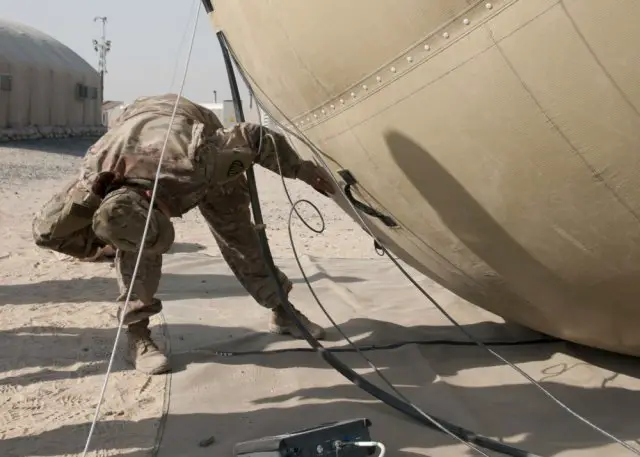Breaking news
US Army 369th Sustainment's Brigade trains on Army’s newest communications equipment 53101173.
| 2017
|
|
|||
|
Defense & Security News - GATR
|
|||
|
|
|||
|
US Army 369th Sustainment's Brigade trains on Army’s newest communications equipment
|
|||
|
While it may resemble a giant beach ball, the inflatable Ground Antenna Transmit Receive (GATR) Ball is actually the U.S. Army’s latest piece of satellite communications equipment. The technology is so new that the 369th Sustainment Brigade’s GATR Ball has a serial number in the single digits.
|
|||
|
|
|||
 Spc. Orquidea Rosa, of the 369th Sustainment Brigade, practices aligning a Ground Antenna Transmit Receive (GATR) Ball at Camp Arifjan, Kuwait on Jan. 10, 2017. (U.S. Army photo by Sgt. Jeremy Bratt) Spc. Orquidea Rosa, of the 369th Sustainment Brigade, practices aligning a Ground Antenna Transmit Receive (GATR) Ball at Camp Arifjan, Kuwait on Jan. 10, 2017. (U.S. Army photo by Sgt. Jeremy Bratt) |
|||
|
|
|||
|
“As a Soldier, it is exciting to train and work on the Army's most cutting edge technology. The training involved is necessary to continue achieving the Army's mission goals,” said Sgt. 1st Class Brian Horne, the information assurance supervisor for the 369th SB.
Training on the GATR Ball system involves a combination of both classroom and hands-on training with the equipment. Signal Soldiers from the 369th SB and other units received instruction in various topics regarding satellite communication, such as the electromagnetic spectrum, transmission frequencies and signal polarization. The hands-on instruction involved modules in properly aligning the GATR Ball as well as assembling and disassembling the system. Designed to be lighter and more compact than traditional, rigid satellite dishes, the GATR ball can be broken down into just a few cases and hand carried anywhere in the world. The self-contained system can then be inflated and set up in less than two hours, ready to provide a variety of communication services. “The portability of the GATR system is its key feature. It can be set up and operated by a crew of three just about anywhere,” said Horne, a Carmel, N.Y. resident. The mobile nature of the system is not the GATR Ball’s only advantage, it also provides a larger bandwidth capacity over comparable older systems. More bandwidth translates into being able to send more data. According to Sgt. Moises Orta-Castillo, a Brooklyn, N.Y. resident and multichannel transmission systems operator/maintainer for the 369th SB, the system is simple to use and, “the GATR Ball is capable of more data transfer in a smaller package compared to the traditional satellite systems.” The availability of an advanced, highly mobile, easy-to-use communication system allows sustainment units the ability to rapidly deploy forces to new locations in order to supply supported forward elements. By enabling effective voice and data communication, commanders can remain in contact with their subordinate elements or units when they are geographically separated from the main command post. “For the sustainment community, this means that there will only be a small lag time between when supported units become aware of a requirement and when the supporting units can begin satisfying that requirement. The bottom line is that this system helps sustainers meet demands sooner than they would be capable of if they were relying on traditional communication assets,” said Maj. John McBride, a Dutchess County, N.Y. resident. McBride is the signal officer of the 369th SB, famously known as the “Harlem Hell Fighters.” The 369th SB deployed to Kuwait in October of 2016 with about 250 Soldiers and provides logistics support to both U.S. and coalition forces in nearly a dozen countries all across the U.S. Central Command area of responsibility. The 369th is famously known as the "Harlem Hell Fighters." During World War I, the unit was a segregated African-American Infantry Regiment which was one of the most decorated in the United States Army. The regiment's Soldiers fought under French command and were famous for never giving ground to the enemy. |
|||



















